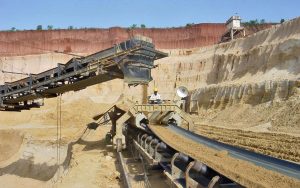The phosphate industry has a waste problem, and the CSIRO is here to help.
Australia’s peak science research body announced a breakthrough in its efforts to commercialise a low-waste smelting process.
The technology has been licensed exclusively to an Australian company, PyroPhos, which says it has already attracted strong interest from industry players.
Big business
Phosphate is an essential component in fertilisers and construction materials such as cement.
The global phosphate market is now a $73 billion industry, and it’s expected to keep growing in the years ahead.
But phosphate producers face two key problems:
- Amid increased demand, many of the world’s most bountiful phosphate deposits are being depleted; and
- Phosphogypsum – the waste by-product generated as part of the “wet acid” phosphate manufacturing process.
For every tonne of phosphate produced, about three tonnes of phosphogypsum are created and it all has to be stored — to the tune of around three billion tonnes per year.
Heating up
“In contrast to wet acid, the new process involves applying heat to phosphate ores, resulting in a safe gravel byproduct,” the CSIRO says.
That gravel can then be used in the construction of roads and Portland concrete — the core component of cement.
The CSIRO says its high-temperature process is cheaper too because it uses less inputs.
In addition, “a major benefit of the process is that is can be used on lower grade ores giving phosphate miners and processors the opportunity to increase their productivity in an environmentally sustainable way”, CSIRO team leader Keith Barnard said.
Producers who adopt the new process could see up-front capital costs fall by two thirds, while also benefitting from reduced operating costs.
Bringing it to market
While the core intellectual property (IP) was developed by the CSIRO, the agency has licensed the technology to PyroPhos to help bring it to market.
“Our networks and investor base give us the ability to connect PyroPhos technology to the global phosphate industry,” PyroPhos director Mark Muzzin said.
“We have had an excellent response from the industry and believe it has the ability to make a major impact.”
PyroPhos aims to market the technology internationally, starting with the world’s biggest phosphate producers — China, Morocco and the US.
The CSIRO said Australia also has some phosphate resources where the process could be beneficial.

